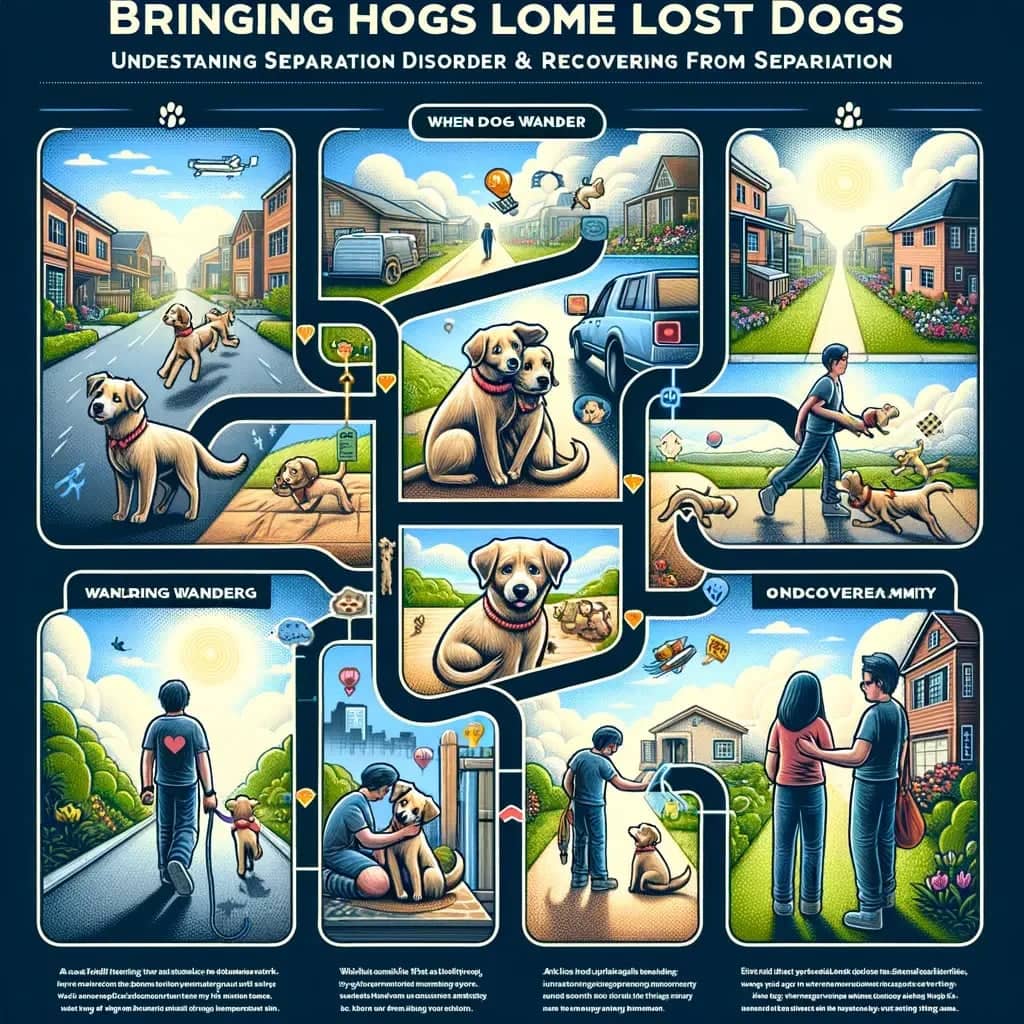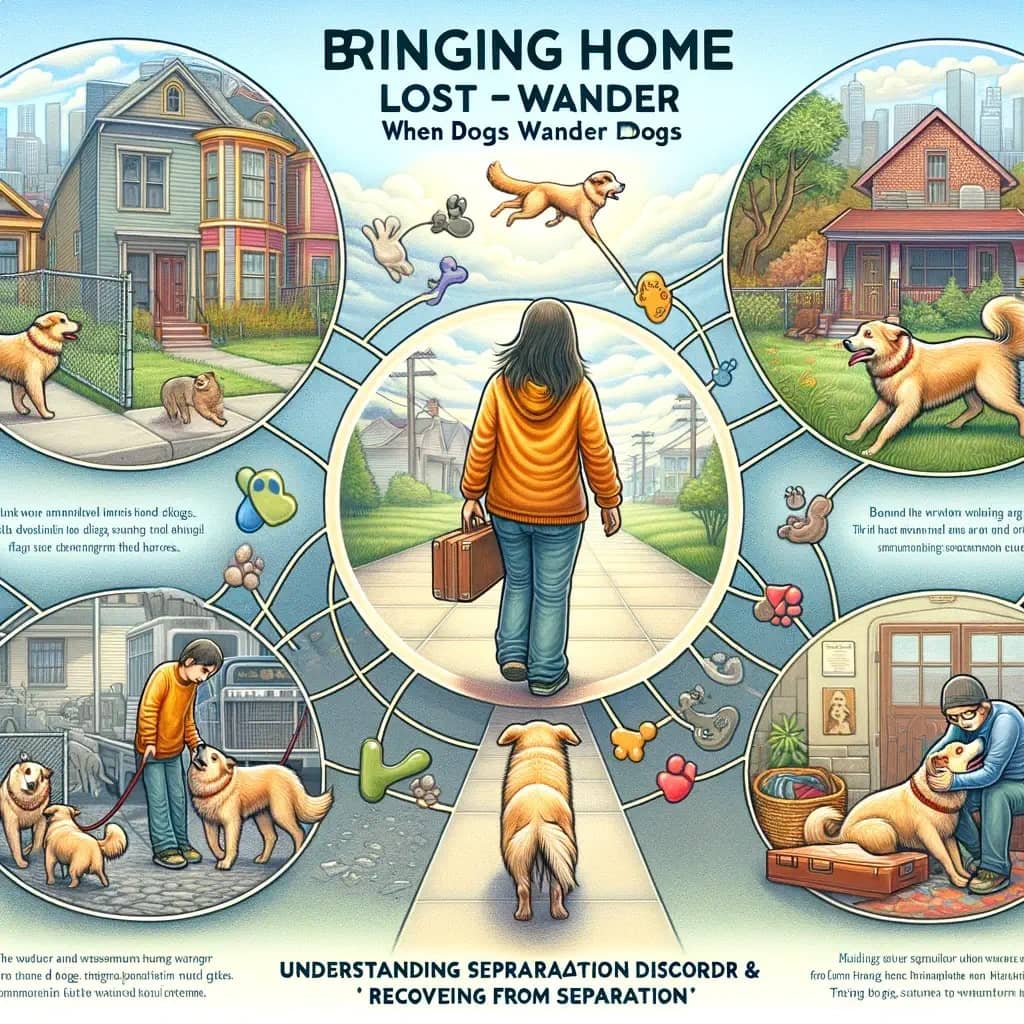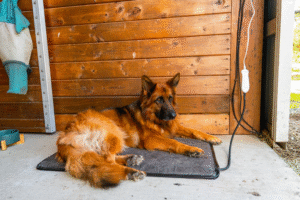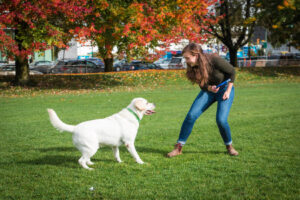Bringing Home Lost Dogs When Dogs Wander – Understanding Separation Disorder & Recovering from Separation
In the realm of pet ownership, the phenomenon commonly referred to as Canine Disappearance Syndrome, or alternately, the enigma of a vanishing dog, delves into the peculiar behaviors and reactions of dogs upon their unexpected return after being lost. Dogs that have strayed away from their homes for an extended period might exhibit unusual behaviors or respond differently due to the survival instincts they might have adopted during their absence. Such a dog might need considerable time to reacquaint themselves with their familiar environment and daily stimuli once back in the comfort of their home.
Although Canine Disappearance Syndrome is not recognized as a clinical diagnosis, it is crucial for pet owners to approach this situation with the seriousness it deserves, understanding the unique psychological and physical state their dog might be in post-disappearance, and preparing a thoughtful path towards their recovery.
Anticipating Your Dog’s Return: What to Expect
Upon the joyous reunion with your missing canine companion, the foremost action is to ensure their health and well-being by scheduling a visit to the veterinarian. It is common for dogs that have been missing to exhibit signs of physical wear, such as sore or damaged paws from prolonged periods of walking.
It is also worth noting that a dog’s obedience and training might temporarily falter upon their return. This change can be attributed to the survival mechanisms they may have developed while fending for themselves. Although this shift in behavior is generally temporary, patience and gentle retraining can help restore their former demeanor.
Dehydration and notable weight loss are potential concerns for a dog that has been missing for a considerable duration. Adhering to a veterinarian-approved diet is essential during this recovery phase to prevent gastrointestinal issues like bloating.
Moreover, ample rest is vital for a dog returning from an ordeal, considering the probable exhaustion and anxiety experienced during their time away. Ensuring a peaceful and restful environment will aid significantly in their recovery process.
Determinants of a Dog’s Wanderlust

Several factors influence the distance a lost dog might travel, including their temperament, the circumstances of their disappearance, weather conditions, and more.
Temperament of the Dog
Dogs with a friendly demeanor are more likely to stay in proximity to their home, whereas those with a more reserved or fearful nature might venture further. Interestingly, sociable dogs are more prone to being taken in by strangers compared to their shyer counterparts, who may avoid human interaction.
Physical Appearance
The breed and size of a dog can significantly impact the likelihood of them being found. Popular breeds such as Labrador Retrievers may be more quickly adopted by finders, whereas dogs perceived as intimidating might be left to wander. Small dogs, being easier to manage, are often more readily rescued.
Location and Population Density
A dog’s environment plays a crucial role in their adventure. Dogs lost in densely populated areas are more likely to be found and returned swiftly compared to those in rural or less inhabited regions.
Circumstances of the Disappearance
The reason behind a dog’s escape can influence the distance they travel. Dogs fleeing from loud noises like fireworks may travel far in their panic, whereas those following a scent might not stray too far from their initial location.
Navigating Recovery from Canine Disappearance Syndrome
Helping your dog adjust after their ordeal involves understanding and patience. Creating a serene and secure environment is paramount for their mental well-being. Initially, maintaining a respectful distance allows your dog to process their experiences and gradually rebuild trust.
Preventive Measures Against Future Escapades
Preventative strategies include microchipping your dog, ensuring up-to-date contact information, utilizing proper leashes, maintaining secure fencing, and never leaving your pet unsupervised outdoors. Swift action is critical if your dog does manage to escape, as the sooner they are found, the less likely they are to develop lasting effects from their experience with Canine Disappearance Syndrome.



